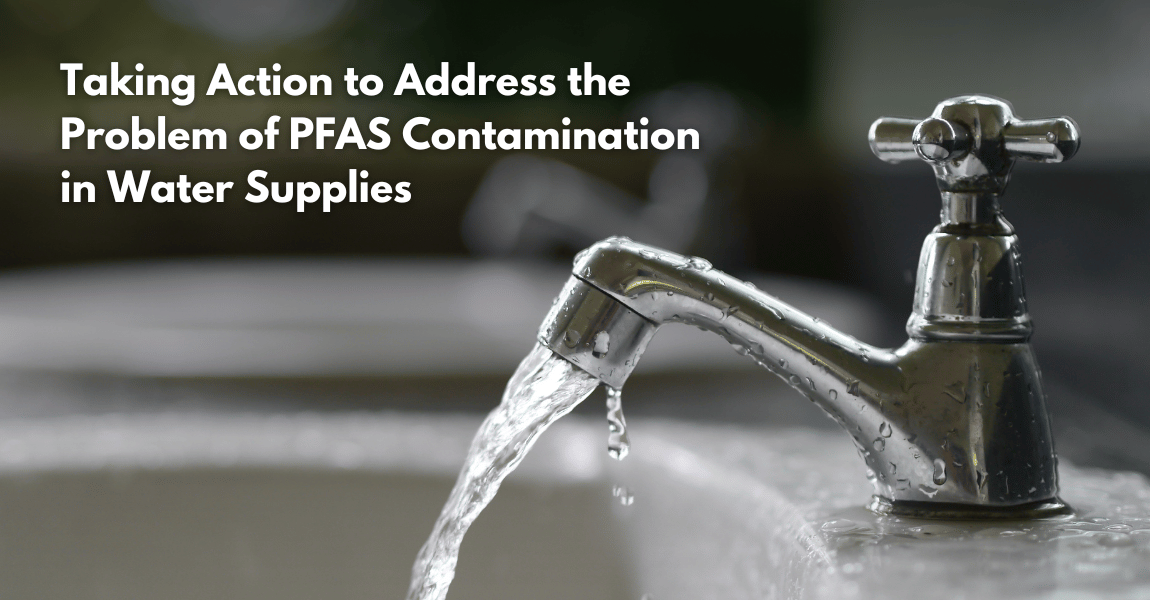Per- and polyfluoroalkyl substances (PFAS) are a group of man-made chemicals that have found their way into various products due to their water- and grease-resistant properties. Unfortunately, PFAS have also seeped into our environment, contaminating water supplies and posing significant health risks. Recently, the Biden administration set maximum contaminant levels for six types of PFAS in water, reflecting growing concern over their presence.
The Need for Government Action on PFAS
A peer-reviewed study by the Environmental Working Group (EWG) estimates that over 200 million Americans could have PFAS in their drinking water. Given the potential health risks, including cancer, liver damage, and immune system effects, it is imperative that the government takes robust action. This includes regular testing of drinking water for PFAS and making the results publicly available to ensure transparency and public safety.

Should PFAS Polluters Be Exempt from Cleanup?
The question of whether Congress should exempt certain PFAS polluters from PFAS cleanup is critical. Exempting polluters could undermine efforts to reduce PFAS contamination and hold responsible parties accountable. Ensuring that all polluters are mandated to clean up PFAS is crucial for long-term water supplies and public health protection.
Public Concern and Awareness
Levels of Concern About PFAS in Water
The recent establishment of maximum contaminant levels for PFAS highlights the severity of the issue. Public concern ranges from extremely concerned to not at all concerned, but the prevalent sentiment is significant worry. This concern is justified, given the persistence and potential health impacts of PFAS in water.
Importance of a Comprehensive PFAS Database
EWG's drinking water database is an essential tool for the public, enabling individuals to check for contaminants in their water, including PFAS. An easy-to-use database is crucial for empowering citizens to reduce exposure to harmful chemicals. Regular updates and user-friendly interfaces will enhance public engagement and safety.
Products Containing PFAS and Public Concerns
PFAS are not limited to nonstick cookware. They are also found in makeup and personal care products, fast-food wrappers, food containers, water-repellent clothing, and home goods like stain-resistant furniture and carpets. Each of these categories raises specific concerns:

Makeup and Personal Care Products
Exposure to PFAS through everyday items like sunscreen and shampoo can accumulate over time, increasing health risks. The cosmetic industry must prioritize PFAS elimination in their formulations to safeguard consumer health.
Fast-Food Wrappers and Food Containers
PFAS ingestion through food packaging is a direct route of exposure that can be minimized with stricter regulations. Companies should be mandated to use safer alternatives to prevent harmful chemicals transfer into food.
Water-Repellent Clothing
Wearing such clothing can lead to dermal exposure to PFAS, highlighting the need for safer alternatives. The fashion industry should innovate to create water-repellent materials that do not compromise health.
Home Goods
Stain-resistant furniture and carpets can release PFAS into indoor air and dust, contributing to long-term exposure. Consumers should be informed about risks and encouraged to choose PFAS-free home products.
The Urgent Need for Public Support and Donations
The fight against PFAS is gaining momentum but requires continued support. EWG's efforts in 2023 are crucial in this battle. Donations are vital to sustain their work, and contributions can range from $10 to $20 or more, with incentives like sustainable, reusable food wrappers as a thank-you.

Reverse Osmosis
Effectiveness
Reverse osmosis (RO) is a filtration method that uses a semipermeable membrane to remove PFAS and other contaminants from water. It is highly effective at removing a wide range of PFAS compounds.
Advantages
RO removes various contaminants, not just PFAS. Experience the purity of every sip with the Life Sciences™ RO Alkaline Water System, meticulously crafted to meet NSF/ANSI 42 and NSF/ANSI 61 Certifications. This premium-quality, tankless technology-driven device removes up to 98% of contaminants including PFAS, delivering mineralized alkaline water with over 40 health benefits.
The five specialized filters ensure the removal of chlorine byproducts and heavy metals, while adjusting the water's pH to a basic level of up to 8 or 9. NSF/ANSI 61 Certification assures the safety of our materials, ensuring only the best materials are used in constructing our high-quality products. Ensure a refreshing, safe, and pure drinking experience with the Life Sciences™ RO Alkaline Water System.
Activated Carbon Adsorption
Granular Activated Carbon (GAC)
Granular Activated Carbon (GAC) is widely used for removing PFAS from water. GAC works by adsorbing PFAS molecules onto its surface, reducing their concentration in the water.
Effectiveness
GAC is particularly effective for longer-chain PFAS compounds. Experience the purity of every sip with the Hydrogen Alkaline Bioenergy system, meticulously crafted to meet NSF/ANSI 42 and NSF/ANSI 61 Certifications. The Life Sciences™ Hydrogen Alkaline Bio Energy Water System is a state-of-the-art 5-stage filtration system that ensures clean and safe drinking water by removing impurities, PFAS, and enhancing water quality. Our NSF/ANSI 42 Certification guarantees superior aesthetic excellence by reducing chlorine content and enhancing clarity. Meanwhile, NSF/ANSI 61 certification assures the safety of our materials, ensuring only the best materials are used in constructing our high-quality products. A refreshing, safe, and pure drinking experience awaits you with the Hydrogen Alkaline Bioenergy system. learn more
Conclusion
Addressing PFAS contamination is a multifaceted challenge that requires government action, public awareness, and continuous support for organizations like EWG. By staying informed, advocating for transparency, and contributing to ongoing efforts, we can collectively mitigate PFAS risks and ensure safer water supplies for future generations.

